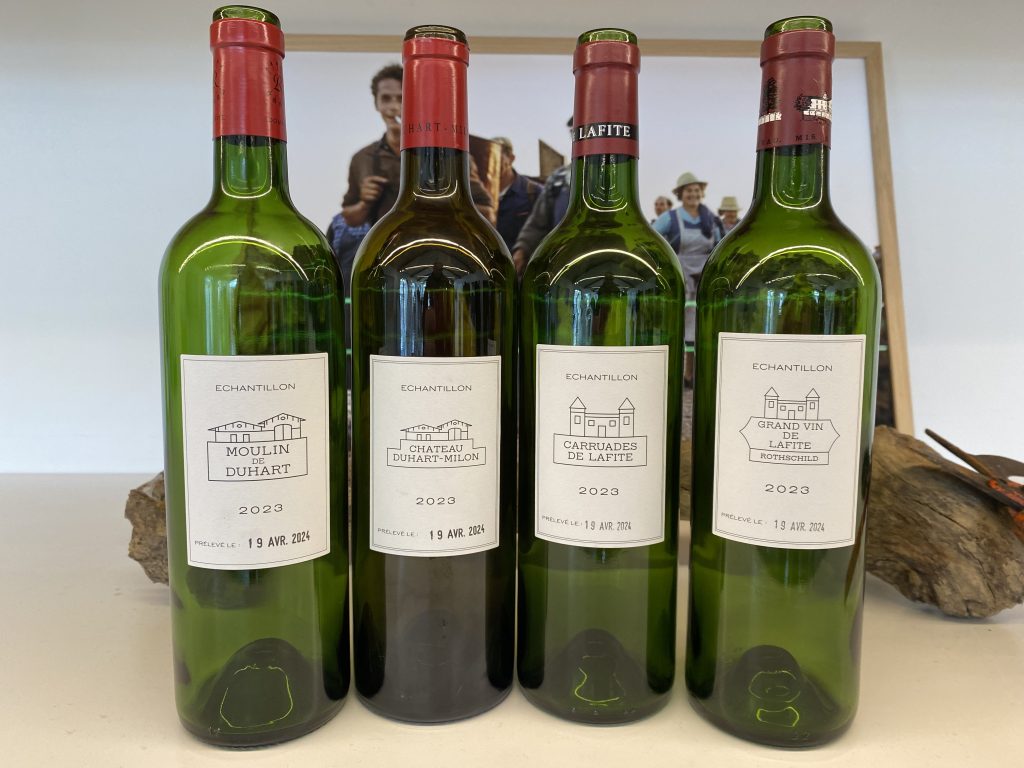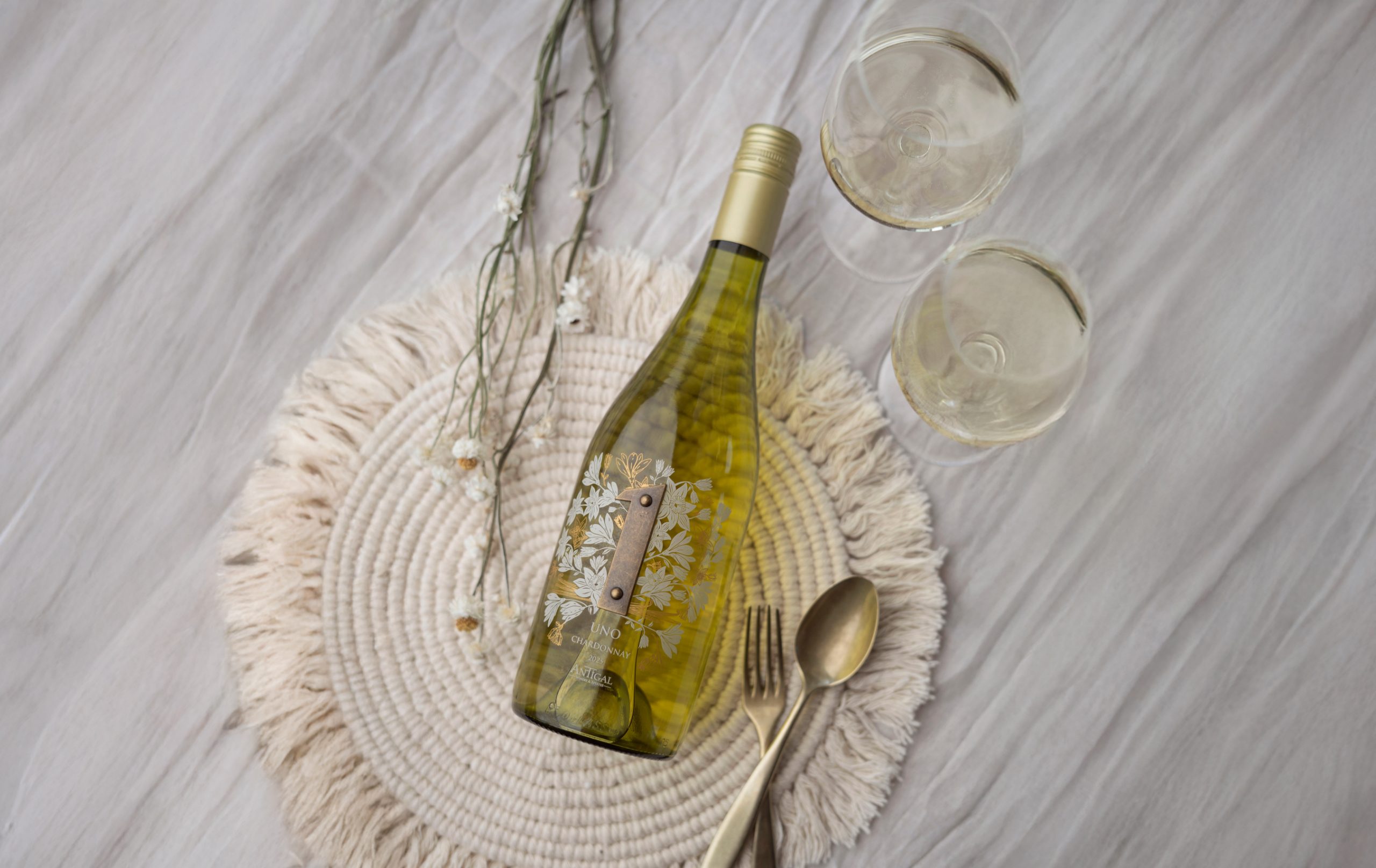Domaines Baron de Rothschild’s 2023 en primeur releases
With en primeur week having taken place in the last full week of April and with the early releases already flooding out of Bordeaux in what is threatening to become a rather hectic en primeur campaign, it was always likely that the releases would get ahead of my capacity to write up appellation-by-appellation profiles.

So, on the eve of what seem destined to be a series of historic releases from Saskia de Rothschild, make or break for the reputation of this vintage on the primary and secondary market, let me give you a preview of my tasting notes for the releases scheduled for 2 May.
A note on the ratings
This year, as is now my habit, I have again decided to provide an indicative rating for each wine alongside the published comment. All such comments and ratings are necessarily subjective (they cannot be anything else when one thinks about it). I would urge you to look at the two together and, if anything, to privilege the comment over the rating. My aim is more to describe the wine in the context of the vintage, the appellation and recent vintages of the same and similar wines, rather than to judge the wine per se.
The ratings, of course, reflect my subjective evaluations and relative preferences between wines. Your palate is likely differ from mine. I hope that my comments give you at least enough information to be able to recalibrate my ratings and, in so doing, to align them more closely to your own palate. To give an example: if the idea of the ‘new classicism’ leaves you cold, you may well wish to discount the (typically high) ratings I have given to wines described in such terms.
2023, like both of its predecessors is, of course, a far from homogeneous vintage – and, consequently, my ratings span a considerable range (from the very top of the scale downwards). I see little interest, either for the consumer or the producer, in publishing very low scores. Consequently, I have decided not to publish scores for classed growths (or equivalent wines) that I have rated below 90 (here the range 89-91) and for crus bourgeois (or equivalent wines) that I have rated below 89 (here the range 88-90). Where no rating is published, the wine would have scored below these thresholds. Where my written assessment of the wine might also have proved unflattering to the property, I have simply chosen to publish neither the commentary nor the rating.
Finally, élevage is likely to be very important in determining the quality in bottle of these wines. I am no soothsayer and cannot predict how that will turn out (another reason for the use of banded ratings). But all en primeur ratings should be treated with caution and taken with a certain pinch of salt.
Partner Content
Tasting notes – Domaines Baron Rothschild releases
- Lafite Rothschild (Pauillac; 93% Cabernet Sauvignon; 6% Merlot; 1% Petit Verdot; a final yield of 45 hl/ha; pH 3.76; aging in oak barrels, 90% of which are new; 12.9% alcohol). This is so beautifully redolent of Lafite and could be no other wine. Carruades might have been starved in a way to make this, but you would, wouldn’t you! Gorgeous refined black currant and black cherry, oodles of cedar and a little graphite, HB pencil-shavings fresh from the sepia-tinged classroom of the 1960s and a hint of dark chocolate-coated violet. Soft, elegant, relaxed and plush, with a very soft-focused but dense and compact spherical core – a black hole of black fruit. Gracious and almost hinting at opulence but for the freshness of the vintage which brings instead a striking energy and vivacity. But this is relaxed and measured where Mouton is vivid and dynamic, cashmere replacing the fine silk layering of its near neighbour. I love the Cabernet fruit that pulses through all of its veins. There’s lots of fruity capillarity here! 96-98+.
- Carruades de Lafite (Pauillac; 60% Cabernet Sauvignon; 40% Merlot; pH 3.70; a final yield of 45 hl/ha; 13.2% alcohol). Very dark berry fruited with a little damson. Herbal and almost a little herbaceous. Quite strict and austere though with ultra-refined and super fine-grained tannins. A nice juicy sapidity. There’s a touch of crushed rock and rock salt minerality that lifts this on the chewy finish. Clean, lean and fresh on the finale which is nicely focussed and well-sustained. 92-94.
- L’Evangile (Pomerol; 79% Merlot; 21% Cabernet Franc; less than 1% Cabernet Sauvignon; pH 3.75; 50% new oak; 13.5% alcohol). Quite plump with a lot of Cabernet Franc for the property. Intimate and a little closed but very redolent of L’Evangile. Voluptuous and yet reserved, much less immediately opulent than is has tended to be, more intimate and introvert. Plump black cherries and their texture in the mouth. Wild bilberry. Mulberry too and maybe a little hint of damson. Thyme. Graphite. Superb texturally with a most gracious mouthfeel. Plush and sleek, with great mid-palate density. Very refined. Not boisterous. I love the Cabernet Franc notes, with a little injection and release of cassis through the stone fruit frame set by the Merlot in the mid-palate. It brings a plume of freshness just when it is needed. There is more of a link to Lafite than ever before I find (with Saskia de Rothschild leading the blending of both). 95-97+.
- Duhart-Milon (Pauillac; 80% Cabernet Sauvignon; 20% Merlot; a final yield of 45hl/ha yield; around 65% of the production made the selection for the grand vin; 15% press wine; 13.1% alcohol). Rather closed aromatically when tasted under light grey skies with rain in the air at the property. Cedar, fruits of the forest, cassis. A big, plump and quite spherical mouthful of sapid, juicy, fresh berry fruits. This feels cool, autumnal, almost slightly austere in a way, with a hint of wild herbs and heather – wild, almost sauvage. Not terribly dense or, indeed, compact, but crystalline, clear, translucent and quite pixilated by the tannins, whose glossiness and finesse brings polish. The acidity picks up on the finish, which helps give it lift. If I have a quibble it is that, like Moulin de Duhart, this feels just a little herbaceous on the finish. The frame is almost too ample to sustain the fruit intensity. 93-95.
Other scheduled releases
- Lynch-Moussas (Pauillac; 78% Cabernet Sauvignon; 22% Merlot; tasted at the UGC press tasting at the Cité du Vin and at Batailley). A little less engaging when tasted after Lynch-Bages, which I guess is the cross it must bear, but soft, gentle, easy and lithe. Raspberry. A little sloe and damson. Lithe and quite plush if not exactly plump. The tannins are a little less refined on the finish, but the progress here needs to be underscored. A much stronger wine than it used to be and an impressive showing from a wine that used to be rustic and even a little coarse. 91-93.
- Trottevieille (St-Emilon; 53% Cabernet Franc; 44% Merlot; 3% Cabernet Sauvignon; 13.5% alcohol; 28 cuves for 8 hectares, giving them the liberty to to pick over such a long period of time and at optimal ripeness). Big, plump and plush with a lovely texture. Very broad shouldered but with a form of vertical gravitas and profundity that comes from so much Cabernet. The wild blueberries fill the space allowed them by the structure, chiselled as it from the limestone below. Violet and rose. Rose pepper corns. Cool and lithe and rippling with juicy, sapid dark berry fruit juice. Really succulent and sapid and refreshing, vivid, vibrant and quite energetic. There’s impressive density too. Full, but oh so fresh. The limestone tannins grip the fruit and pull it back to the spine, giving this an hourglass-shaped structure that has the same effect on my cheeks – so this almost finishes on a light, aerial whistle, leaving just the taste of grape skins. Picked like a Sauternes. 95-97.
- Lynsolence (St-Emilion; 100% Merlot; tasted at the Grand Cercle tasting at La Dauphine). Incense and bright fresh spring blooms, a little graphite and acacia wood, a twist of black pepper too. Soft and beguiling with a lovely fresh cassis element welling up from the depths brining both freshness and lift. Very good as it so often is. Elegant and beguiling. Subtle. 92-94.
Related news
For the ninth day of Christmas…




